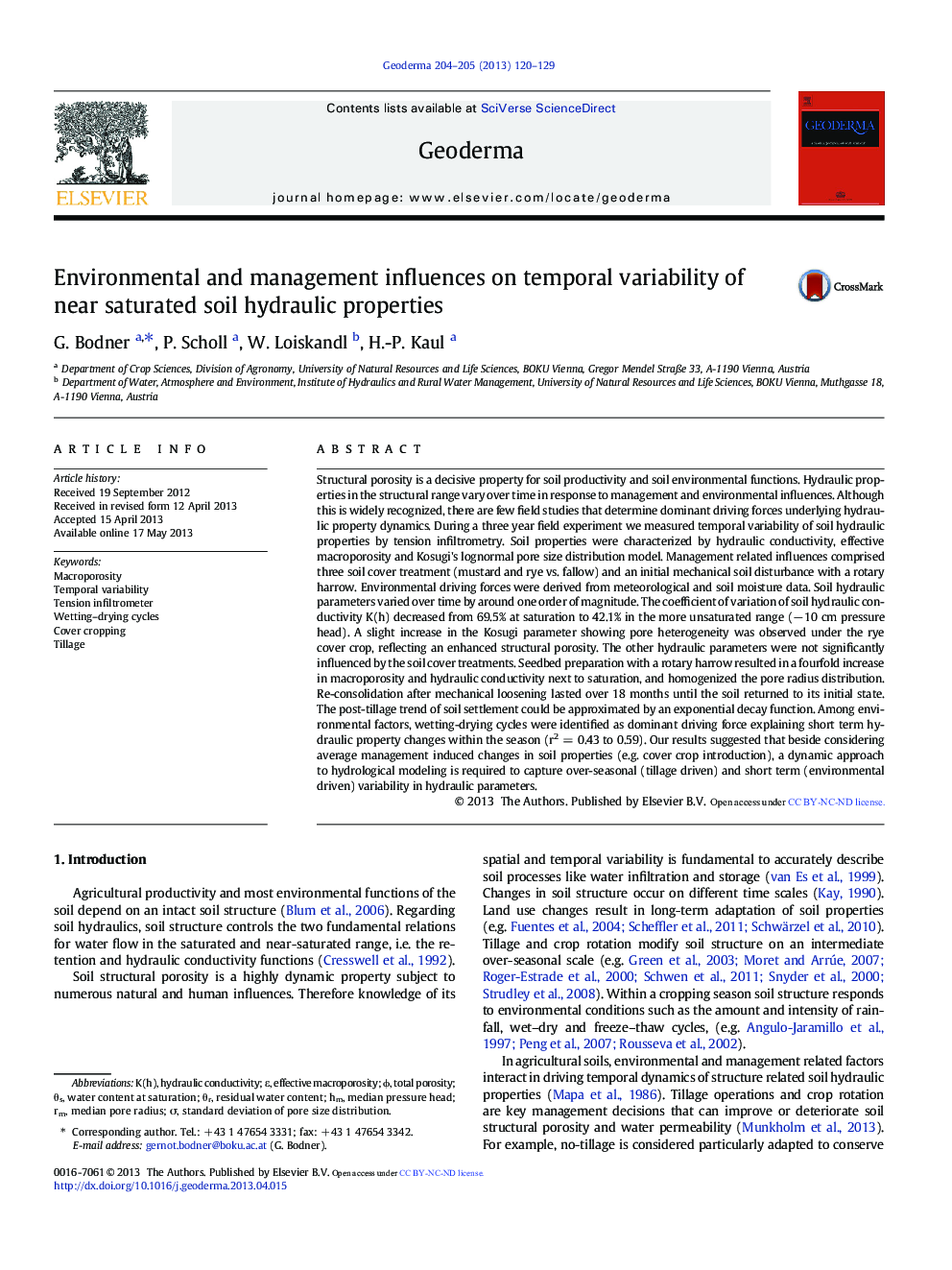| کد مقاله | کد نشریه | سال انتشار | مقاله انگلیسی | نسخه تمام متن |
|---|---|---|---|---|
| 6409203 | 1629484 | 2013 | 10 صفحه PDF | دانلود رایگان |
- Variability of hydraulic properties decreases from macropore to unsaturated range.
- Management effects are over-seasonal, environmental effects within the season.
- Mechanical disturbance has a higher impact compared to plant based measures.
- Rye increases pore heterogeneity, tillage gives a temporarily higher median radius.
- Wetting-drying intensity is a dominant driving force of hydraulic properties.
Structural porosity is a decisive property for soil productivity and soil environmental functions. Hydraulic properties in the structural range vary over time in response to management and environmental influences. Although this is widely recognized, there are few field studies that determine dominant driving forces underlying hydraulic property dynamics. During a three year field experiment we measured temporal variability of soil hydraulic properties by tension infiltrometry. Soil properties were characterized by hydraulic conductivity, effective macroporosity and Kosugi's lognormal pore size distribution model. Management related influences comprised three soil cover treatment (mustard and rye vs. fallow) and an initial mechanical soil disturbance with a rotary harrow. Environmental driving forces were derived from meteorological and soil moisture data. Soil hydraulic parameters varied over time by around one order of magnitude. The coefficient of variation of soil hydraulic conductivity K(h) decreased from 69.5% at saturation to 42.1% in the more unsaturated range (â 10 cm pressure head). A slight increase in the Kosugi parameter showing pore heterogeneity was observed under the rye cover crop, reflecting an enhanced structural porosity. The other hydraulic parameters were not significantly influenced by the soil cover treatments. Seedbed preparation with a rotary harrow resulted in a fourfold increase in macroporosity and hydraulic conductivity next to saturation, and homogenized the pore radius distribution. Re-consolidation after mechanical loosening lasted over 18 months until the soil returned to its initial state. The post-tillage trend of soil settlement could be approximated by an exponential decay function. Among environmental factors, wetting-drying cycles were identified as dominant driving force explaining short term hydraulic property changes within the season (r2 = 0.43 to 0.59). Our results suggested that beside considering average management induced changes in soil properties (e.g. cover crop introduction), a dynamic approach to hydrological modeling is required to capture over-seasonal (tillage driven) and short term (environmental driven) variability in hydraulic parameters.
Journal: Geoderma - Volumes 204â205, August 2013, Pages 120-129
